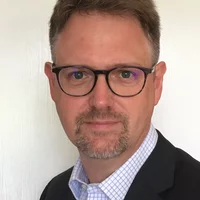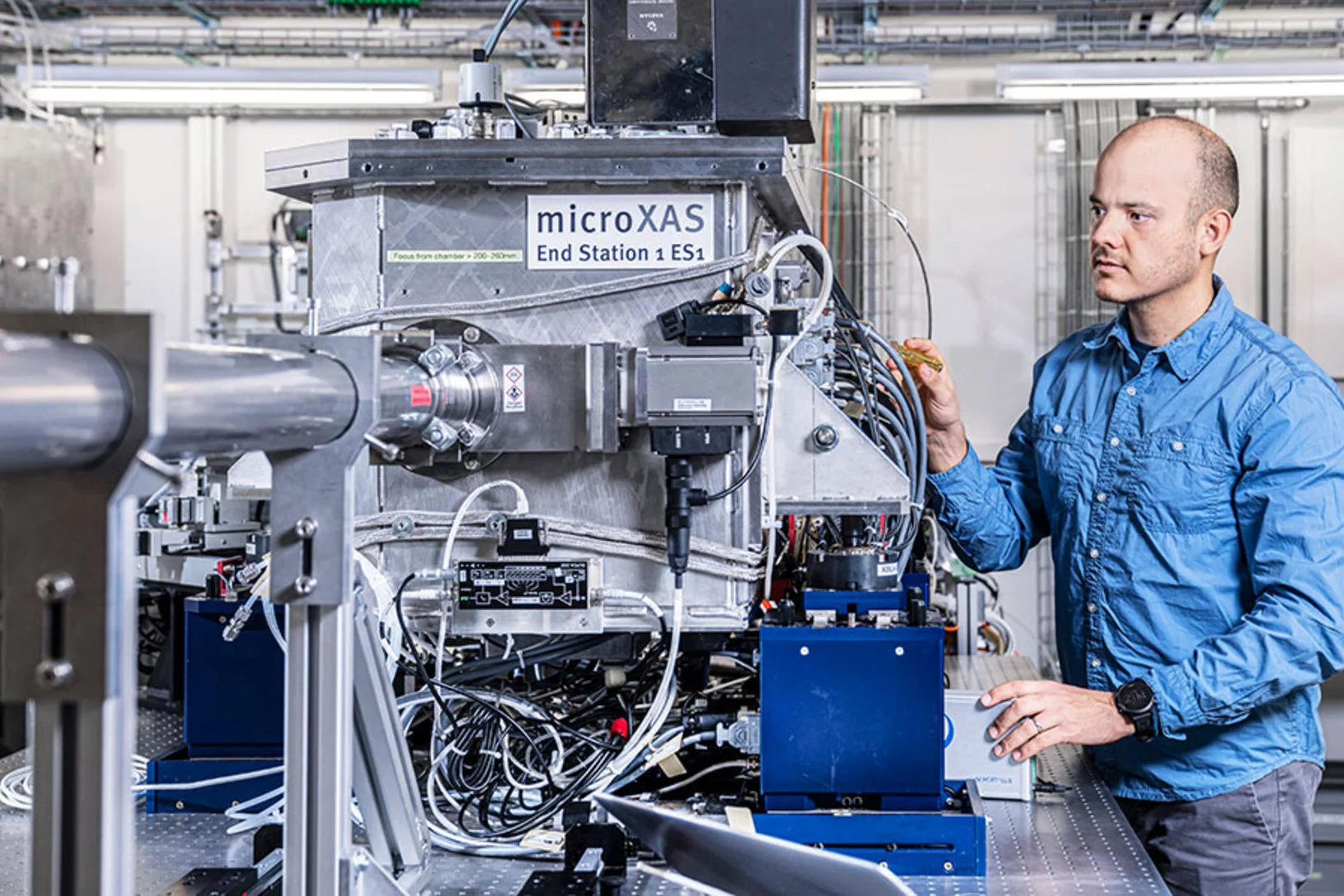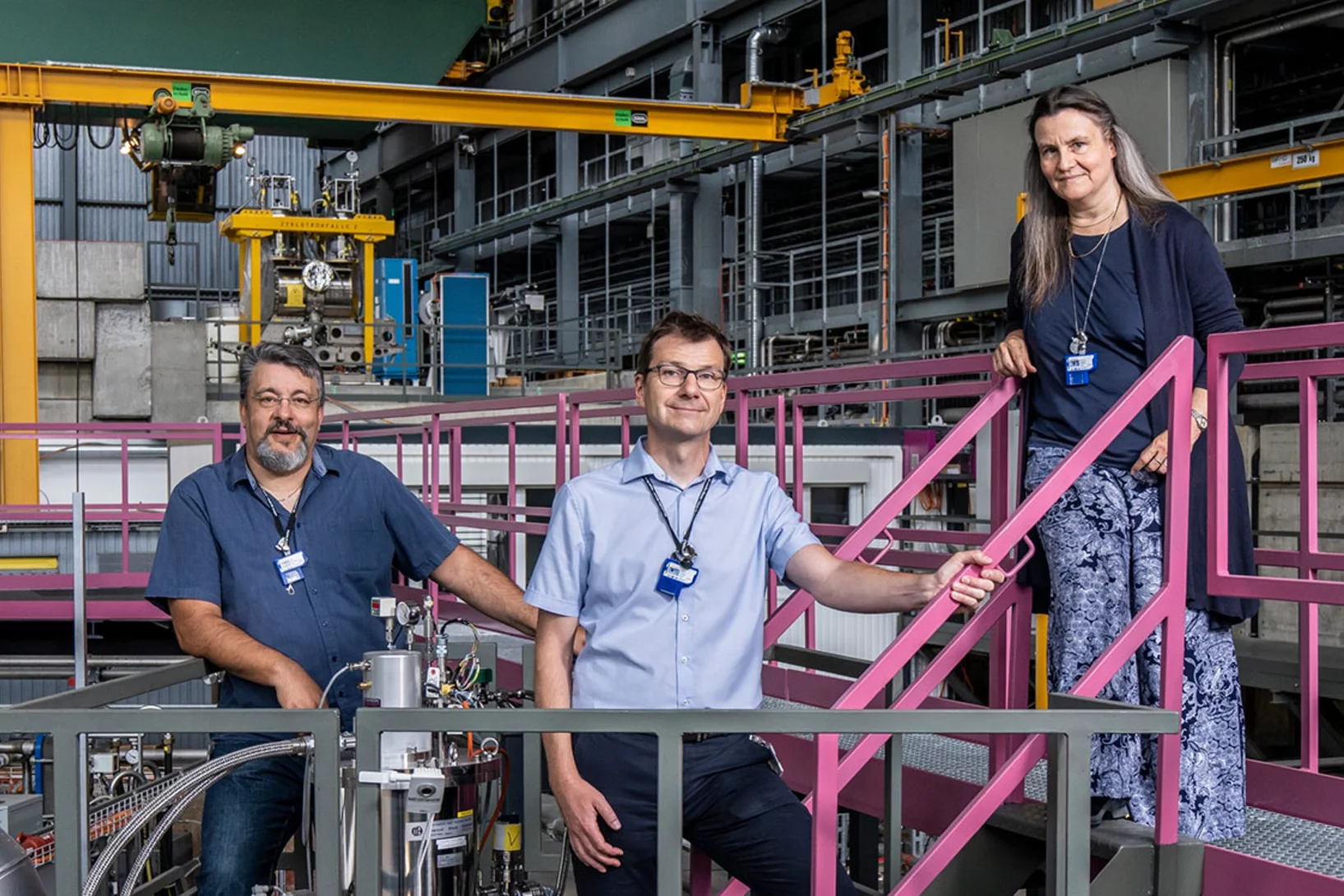Prestigious funding for three research projects at PSI
Three researchers have each been awarded one of the prestigious grants from the Swiss National Science Foundation (SNSF) for their research at the Paul Scherrer Institute PSI. Over the next few years, they will use the grants totalling 5.5 million Swiss francs to take a closer look at concrete, gain a better understanding of chemical catalysis and help in the search for a new theory that explains our world.

John Provis is studying concrete and the complex interplay between its many components. The aim is to develop a better understanding of this building material and make it more sustainable. © Paul Scherrer Institute PSI/Mahir Dzambegovic
A materials researcher, a catalysis specialist and a theoretical physicist all have good reason to be happy: their research projects at PSI will be receiving millions in funding from the Swiss National Science Foundation over the next five years. One of the scientists has been awarded an Advanced Grant worth 2.14 million Swiss francs, while the other two will receive Starting Grants worth 1.7 million Swiss francs. This means that PSI will be taking in a total of 5.5 million Swiss francs.
John Provis: Research into concrete
Buildings, bridges, car parks – concrete is a ubiquitous construction material. Which is probably why it is underrated, according to John Provis from the PSI Center for Nuclear Engineering and Sciences. “Concrete is very forgiving. Even if you mix it wrong, you still get something that behaves pretty well. So, most people don't realise how complicated the chemistry behind concrete actually is.”
The materials scientist is particularly interested in the countless interfaces where the surfaces of the particles meet: these include cement, grains of sand, pebbles, ash, limestone, clay – and of course water molecules. The many different components vary greatly in size and result in complex interactions that are largely still not understood.
“Basically, we don’t know what makes concrete go hard. And what makes it stick.” So John Provis is planning to watch concrete set – literally. Among other things, he will be using the Swiss Spallation Neutron Source, SINQ. Neutron radiation can penetrate materials, allowing us to look inside them, and even water molecules can be seen.
Provis’s primary goal is to improve concrete, while at the same time making it more sustainable. Because the better we understand this material, the easier it will be to design new types that are more environmentally friendly. As cement is also used to safely store radioactive waste, John Provis’s team is based at the Laboratory for Waste Management.
John Provis has been awarded an SNSF Advanced Grant for his project, which is worth 2.14 million Swiss francs over the next five years.

Aram Bugaev will observe chemical reactions in tiny apparatuses. For this, he will use the special X-rays produced by the Swiss Light Source SLS at PSI. © Paul Scherrer Institute PSI/Mahir Dzambegovic
Aram Bugaev: Research into catalysis
It is only thanks to catalysts that many chemical reactions can be used industrially at all. These substances speed up a reaction without being consumed themselves. Catalysts are indispensable in the production of medicines, for example. At the PSI Center for Photon Science, Aram Bugaev is investigating exactly how such reactions take place.
The scientist does this with the help of micro-reactors: a network of millimetre-sized channels etched or cast in glass or plastic. The small tubes only hold tiny amounts of liquid, which is constantly pumped through the apparatus. “This miniature reactor allows us to study reactions more quickly and with less material than using a glass flask in a chemistry lab,” explains Aram Bugaev. “For example, we can mix liquids, increase the temperature or change other conditions in next to no time – and the process can even be automated.”
After mixing the substances and catalysts in the micro-reactor, the researcher uses X-rays to look inside the liquid to understand exactly what is happening during the reaction – and what needs to be changed in order to produce more of the desired product, for example. “We want to develop a platform that can be used to study and optimise any reaction that takes place in a liquid.”
The researcher uses synchrotron radiation, i.e. particularly high-intensity X-rays, for his investigations. That is why he is eagerly waiting for PSI’s Swiss Light Source SLS to go back online soon, following the current SLS 2.0 upgrade. Because of this, his project will begin in September. In the meantime, he is putting together his research team.
Aram Bugaev will receive an SNSF Starting Grant of 1.7 million Swiss francs. The pharmaceutical company Novartis is involved in the funded project as a scientific collaboration partner.

Jason Aebischer will be developing software. This will be freely accessible to all researchers and is meant to test new models in particle physics that describe our world. © Jason Aebischer
Jason Aebischer: In search of new physics
The Standard Model of particle physics describes how the world works: what we are made of, how these tiny building blocks interact and why many things have mass, including us. But many phenomena are not explained by this theory – there are gaps in our understanding of the world. “For example, we don’t understand what dark matter and dark energy are, even though they make up 95 per cent of our universe,” says theoretical particle physicist Jason Aebischer.
Physicists are therefore working on new models that can also explain those phenomena that for now remain shrouded in mystery. “We believe that the Standard Model of particle physics can be extended by adding new particles and new forces.” Researchers are developing new models and testing them through time-consuming calculations.
As part of his project, Jason Aebischer will be developing software that can help test such new models. “This software will be freely accessible to all researchers. In other words, anyone can use it to test models and see which phenomena a theory describes well or imperfectly. It also allows many models to be ruled out straight away.” Jason Aebischer is currently still conducting research at CERN in Geneva. In October, he will move to the Laboratory for Particle Physics at the PSI Center for Neutron and Muon Sciences, where he will set up his own research group with an SNSF Starting Grant of 1.7 million Swiss francs.
At PSI, he will apply his software to specific experiments in order to compare his models with reality. One experiment that Aebischer is excited about is the planned Mu3e experiment, which will search for the decay of a specific particle, the muon, into three other particles, namely an electron and two positrons. The Standard Model of particle physics predicts that this type of decay is very unlikely – but PSI is trying to detect it anyway. This is one of many experiments that will reveal where the Standard Model needs to be corrected.




